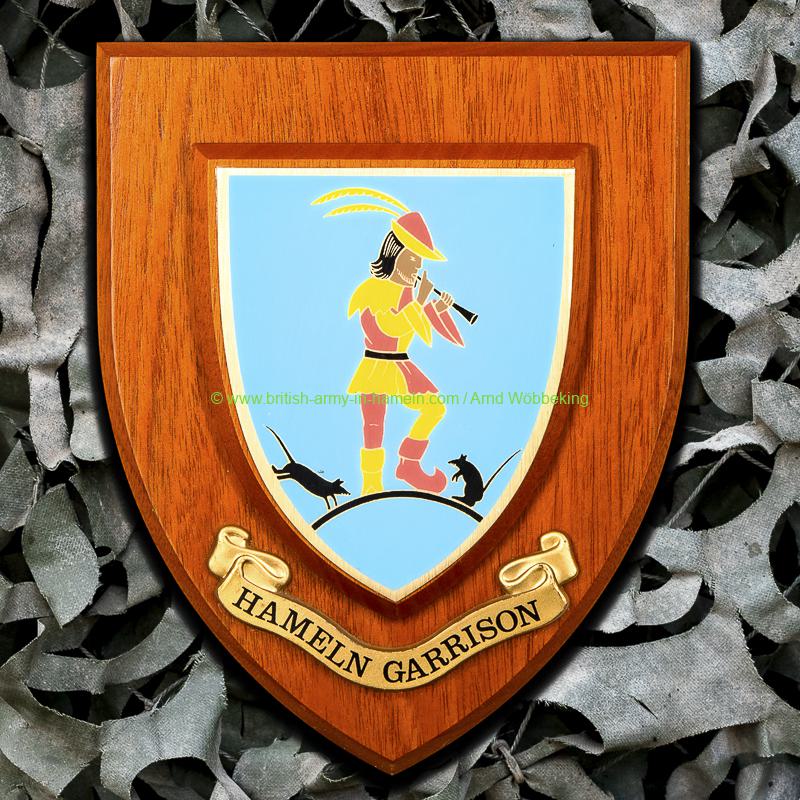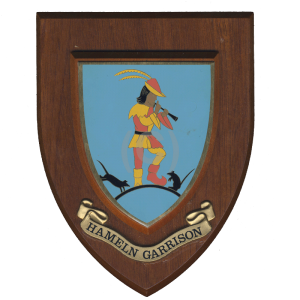© British Army in Hameln.com / Arnd Wöbbeking

© www.british-army-in-hameln.com / Arnd Wöbbeking
🇬🇧 1952/07/07 🇬🇧
Exercise „Unnamed“
On July 7th, 1952, the DWZ reported on large British exercise in and around Polle.
From Thursday, July 3rd, 1952, until late Saturday evening, two opposing units of the British Army engaged in combat there. One unit was stationed on the Weser riverbank below Polle, while the other was positioned in the Bruchholz area to the east.
Countless military vehicles and tents belonging to the British were lined up in and around the small Weser village.
The intense combat activities, accompanied by a great deal of noise, were reminiscent of the last days of the war in Polle. The roar of jet fighters repeatedly flying low over the rooftops created an eerie atmosphere. The jets’ mission included attacking the two bridges. One light bridge (LAFB – Light Assault Floating Bridge) was built by the British Royal Engineers leading to the beach area, and directly under the castle at the ferry site, a heavy bridge (HAFB – Heavy Assault Floating Bridge) was swiftly constructed.
Unfortunately, there are apparently no photos from that time, but Polle was always a “popular” maneuver area. For instance, a few years later, John Bridgwood with the 26 Engineer Regiment was also in Polle and managed to take a few photos. This is likely what it looked like in 1952 as well.
🇩🇪 1952/07/07 🇩🇪
Exercise „Unnamed“
Am 07.07.1952 berichtete die DWZ über schwere britische Manöver in und um Polle herum.
Von Donnerstag den 03.07.1952 bis zum späten Samstag Abend, bekämpften sich dort zwei gegnerische Verbände der britischen Armee. Die eine Einheit lag am Weserufer unterhalb Polle und die andere im Bruchholze östlich davon.
Unzählige Milltärwagen und Zelte der Engländer waren in und um das kleine Weserdorf aufgereiht.
Die heftigen, viel mit Lärm verbundenen Kampfmaßnahmen erinnerten sehr an die letzten Kriegstage hier in Polle. Dazu das Getöse der immer wieder dicht über die Dächer fliegenden Düsenjäger, schafften eine unheimlich Atmosphäre.
Die Aufgabe der Jäger war unter anderem die beiden Brücken anzugreifen. Eine leichte (LAFB – Light Assault Floating Bridge) wurde von den britischen Royal Engineers zum Strandbad hinüber gebaut und direkt unter der Burg an der Föhrstelle, entstand in Windeseile eine schwere Brücke (HAFB – Heavy Assault Floating Bridge).
Leider gibt es wohl aus der Zeit keine Fotos, aber Polle war immer ein „beliebtes“ Manövergebiet. So war zum Beispiel John Bridgwood mit dem 26 Engineer Regiment ein paar Jahre später auch hier in Polle und hat ein paar Fotos machen können. So wird es wohl auch 1952 ausgesehen haben.
Quelle Zeitungsartikel: Mit freundl. Genehmigung © Deister- und Weserzeitung vom 07.07.1952
Last updated: Juli 12, 2025 at 13:56 pm





Last comments